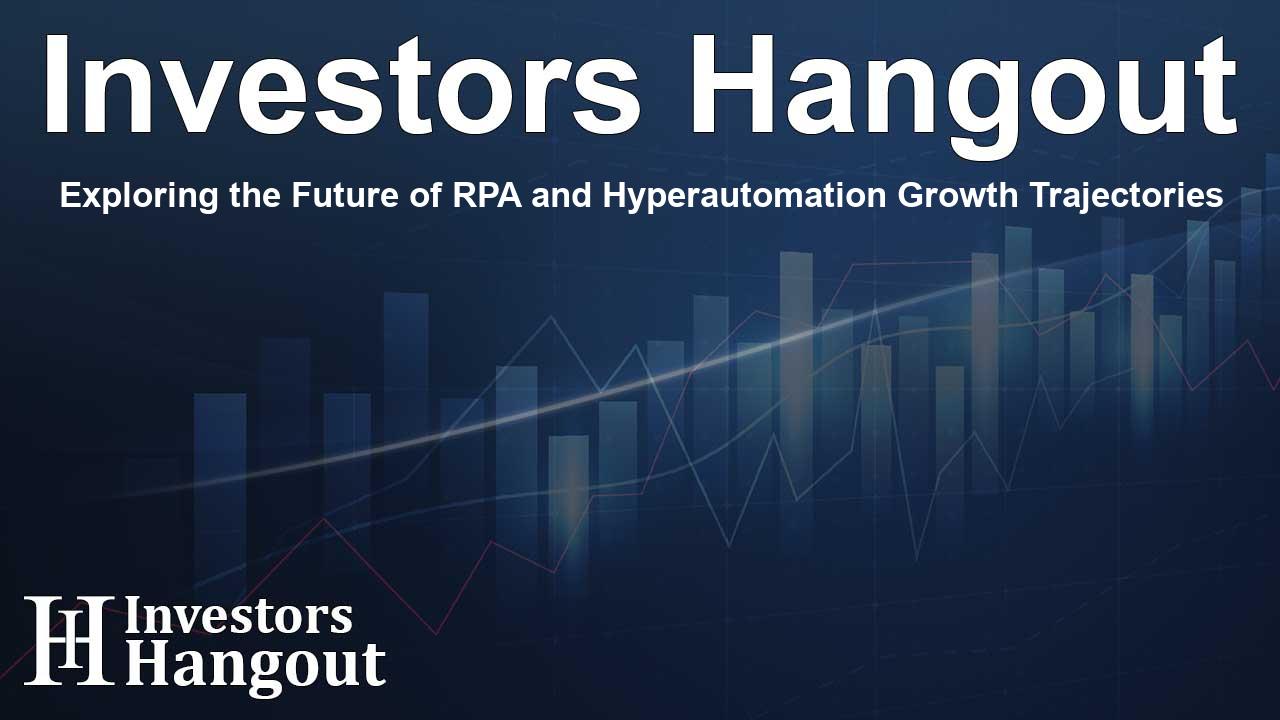Exploring the Future of RPA and Hyperautomation Growth Trajectories

Introducing the RPA and Hyperautomation Landscape
The global RPA and hyperautomation market is on the brink of a phenomenal expansion, with expectations to soar to an impressive USD 103.3 billion by 2033. This dynamic growth trajectory signifies a robust compound annual growth rate (CAGR) of 23.9% from its valuation of USD 15 billion in 2024. The driving forces behind this surge are the increasing demand for automation solutions across various sectors, including BFSI, healthcare, retail, and manufacturing industries.
The Impact of Digital Transformation
Digital transformation has become a pivotal factor in shaping the trajectory of businesses today. With enterprises increasingly recognizing the need for heightened operational efficiency and regulatory compliance, the embrace of digital technologies becomes more imperative. As organizations strive to streamline their processes and enhance productivity, the adoption of Robotic Process Automation (RPA) with advanced hyperautomation technologies, powered by AI and machine learning, provides an optimal solution.
Market Dynamics and Growth Drivers
As organizations navigate the complexities of modern business environments, several key drivers are propelling the RPA and hyperautomation market:
- Operational Efficiency Demand: The quest for improved process efficiency and cost reduction is central to market growth. Automation empowers businesses to reduce errors, cut costs, and elevate performance.
- Digital Initiatives: Continuous advancements in digital technologies push organizations to implement cutting-edge automation solutions, ensuring they remain competitive.
Challenges to Overcome
Despite the immense potential in the RPA landscape, challenges persist. High implementation costs remain a significant concern, especially for small to medium enterprises, while data security and privacy issues pose additional hurdles. Effective strategies to address these challenges are essential for fostering wider adoption.
US Market Insights
Within the larger global context, the US RPA and hyperautomation market is anticipated to witness remarkable growth, expanding from USD 4.9 billion in 2024 to a staggering USD 30.3 billion by 2033 at a CAGR of 22.4%. Key sectors, particularly BFSI and healthcare, underscore their commitment to embracing advanced automation technologies. Furthermore, sustained investment in research and development, alongside strategic partnerships and acquisitions, will play a vital role in enhancing market capabilities.
Emerging Trends in Hyperautomation
The market is experiencing transformative trends that redefine operational paradigms:
- AI and Machine Learning Integration: The synergy between RPA and AI significantly enhances the capabilities of automation, allowing businesses to solve complex challenges and gain actionable insights.
- Cloud Adoption: An increasing trend towards cloud-based RPA solutions amplifies scalability, flexibility, and cost-effectiveness, driving market growth.
The Competitive Landscape
The competitive environment within the global RPA and hyperautomation market is characterized by fragmentation, with numerous players vying for dominance. Notable companies include UiPath, Automation Anywhere, and Blue Prism, all of whom invest substantially in R&D and innovation. Their collaborative efforts, mergers, and acquisitions serve to bolster their offerings, enabling companies to continually refine their automation solutions.
Recent Developments Shaping the Market
Several significant developments are redefining the RPA and hyperautomation landscape:
- Recent initiatives include the launch of AI-driven platforms by leading firms such as UiPath, enhancing their capabilities in intelligent automation.
- Automation Anywhere's acquisition of FortressIQ aims to fuse process intelligence with RPA, demonstrating the growing integration of AI within automation.
Looking Ahead: Opportunities for Growth
The horizon holds immense promise as emerging markets continue to witness significant growth in automation adoption. Furthermore, the development of industry-specific solutions tailored to unique sectoral demands positions the RPA and hyperautomation market for robust expansion in the coming years.
Frequently Asked Questions
What is the projected size of the RPA and hyperautomation market by 2033?
The market is expected to reach USD 103.3 billion by 2033.
What are the primary drivers of growth in this sector?
The main drivers include rising demand for operational efficiency and the ongoing digital transformation initiatives across industries.
Which regions show significant growth potential?
North America, particularly the US, is anticipated to dominate the market with significant revenue shares.
What challenges does the RPA market face?
Major challenges include high implementation costs and concerns regarding data privacy and security.
How is AI influencing the RPA sector?
AI enhances RPA capabilities, allowing businesses to automate complex processes and improve decision-making.
About Investors Hangout
Investors Hangout is a leading online stock forum for financial discussion and learning, offering a wide range of free tools and resources. It draws in traders of all levels, who exchange market knowledge, investigate trading tactics, and keep an eye on industry developments in real time. Featuring financial articles, stock message boards, quotes, charts, company profiles, and live news updates. Through cooperative learning and a wealth of informational resources, it helps users from novices creating their first portfolios to experts honing their techniques. Join Investors Hangout today: https://investorshangout.com/
Disclaimer: The content of this article is solely for general informational purposes only; it does not represent legal, financial, or investment advice. Investors Hangout does not offer financial advice; the author is not a licensed financial advisor. Consult a qualified advisor before making any financial or investment decisions based on this article. The author's interpretation of publicly available data shapes the opinions presented here; as a result, they should not be taken as advice to purchase, sell, or hold any securities mentioned or any other investments. The author does not guarantee the accuracy, completeness, or timeliness of any material, providing it "as is." Information and market conditions may change; past performance is not indicative of future outcomes. If any of the material offered here is inaccurate, please contact us for corrections.